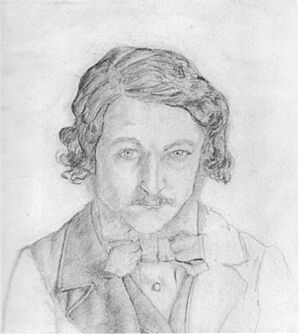Masters in This Hall facts for kids
"Masters in This Hall" (also known as "Nowell, Sing We Clear") is a Christmas carol. The words were written around 1860 by an English poet and artist named William Morris. He set them to an old French dance tune. This carol is somewhat popular around the world, but it's not one of the most famous Christmas songs.
Contents
The Tune's Journey
The music for "Masters in This Hall" was first composed by a French musician named Marin Marais. He created it as a dance tune for his opera Alcyone in 1706. It was called Marche pour les Matelots, which means "Sailors' March."
Later that same year, the tune was included in a dance book by Raoul Auger Feuillet. He also created a specific dance, La Matelotte, to go with the music.
In 1710, an English writer named John Essex translated Feuillet's dance book into English. In his book, For the Further Improvement of Dancing, the dance was called The Female Saylor.
How the Words Were Written
William Morris wrote the words for this carol around 1860. At that time, he was 26 years old and learning to be an architect. He was working in the office of Edmund Street. It's thought that his friends, who enjoyed singing together, encouraged him to write the words.
Another architect and musician, Edmund Sedding, had also worked in G. E. Street's office. He found the tune during a visit to Chartres Cathedral in France. Sedding then included the carol in his own collection of Christmas songs, Nine Antient and Goodly Carols for the Merry Tide of Christmas, published in 1860.
In 1884, the famous poet Algernon Charles Swinburne said this carol was "one of the co-equal three finest ... in the language." Swinburne also mentioned that he suggested the carol be included in a book called A Christmas Garland (1885) by publisher Arthur Bullen.
Other Works Using the Carol
The composer Gustav Holst used "Masters in This Hall" in his work called Three Carols (1916–17). He also included "Christmas Song: On this Day" and "I Saw Three Ships" in this collection. Holst wrote these carols for amateur singers at his festivals in Thaxted. They are meant for a group of singers singing the same melody, with music from an orchestra or organ.
What the Carol Means
"Masters in This Hall" feels like a song from the 1500s. It reminds us of a simpler time, which fits with William Morris's interest in old traditions and stories.
The carol also shows some of Morris's ideas about fairness in society. It talks about poor people bringing the news of Christ's birth to the "Masters in this Hall." It also includes a warning to those who are too proud. This idea of helping the poor and humbling the proud is also found in the song of the Virgin Mary, called the Magnificat. This song is mentioned in the Bible in the book of Luke (chapter 1, verse 51).
In William Morris's original version, there were twelve verses. However, today, people usually sing only four or five verses.
The carol tells the story of a poor man, who speaks in a country accent. He tells his master about the birth of Christ. He describes meeting shepherds on their way to Bethlehem. He joined them and saw the Christ child with his mother. The chorus of the song repeats how Christ's birth has lifted up the poor and brought down the proud.
A Part of the Carol
Masters in this Hall,
Hear ye news to-day
Brought from over sea,
And ever I you pray:
Chorus
Nowell! Nowell! Nowell!
Nowell, sing we clearl
Holpen are all folk on earth,
Born is God's son so dear:
Nowell! Nowell! Nowell!
Nowell, sing we loudl
God to-day hath poor folk raised
And cast a-down the proud.


